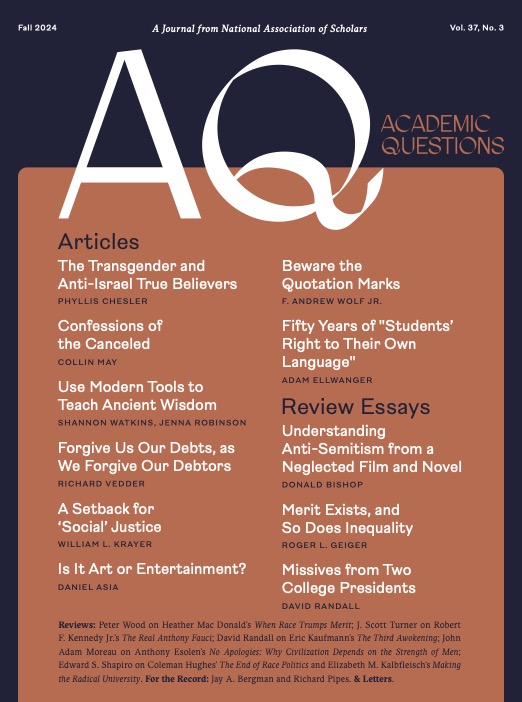Van Gogh: The Immersive Experience has played, or is playing, in many cities across the United States. The exhibit is formed of materials about Van Gogh’s life and recreations in various formats of his work over the course of his life. Its presence on the cultural or entertainment scene may tell us more about our time and ourselves than about Van Gogh. Or maybe a bit of both. It also might tell us something about the desire to find economic rewards in the work of past masters of all genres.
A firm called Exhibition Hub created Van Gogh: The Immersive Experience. The company describes itself as “a curator, producer, and distributor of large exhibitions across the world.” They are in the business of “edutainment.” Their goal is to “use new technologies aimed at large audiences produced at exceptional venues around the world.” The model is much like that of a rock concert world tour. However, given the subject matter of Van Gogh’s art, it seems to me that there is an implicit requirement that the content of the experience should or must pertain to the category of Beauty. If this is correct, then the values of Truth and Goodness ought to be involved to some extent as well.
Can this take place within the realm of “edutainment?” The portmanteau itself is problematic in this artistic setting. The philosopher Roger Scruton argued for a distinction between art and entertainment. Art is about the artifact or performance itself: its inherent qualities that one observes (its aesthetic value). On the other hand, an experience’s entertainment value is all about the fleeting and fickle effect that an event has on an individual: and how one responds—whether or not it pleases or makes one momentarily happy or sad. Can one actually combine these two antithetical postures into something coherent, or is it just posturing? Of course, an artwork can be “entertaining” in the sense of pleasurable, even sensuously so. Yet, its success and impact does not rely on these enjoyments as it does with entertainment, which is the key point.
Education can be pleasurable and entertaining as well. Van Gogh: The Immersive Experience does indeed succeed at this. But the cost of this success is Art. For there is another distinction in the arts between “subject matter” and “content.” The former points to what you see: an artwork’s iconography and topic (e.g. Jesus, angels, and St. John the Baptist in a Baptism of Christ painting). The content of an artwork is the expressive and contextualized meaning of that subject matter. It is what makes a mere image of something into a work of art. Van Gogh: The Immersive Experience strips away the content of the artist’s paintings, and only deals with their subject matter. Because of this, one does not experience anything truly meaningful. In other words, one does not really learn anything about the importance in his artworks. The exhibition goer becomes immersed in The Starry Night, for instance, which is novel. But newness does not guarantee meaning. This sensory saturation is less like a baptism than it is a colorful blanket. One experience penetrates your body and soul in a meaningful way—as with a work of art. The other simply rests upon your body’s surface topically—that which one can merely see.
How does this take place in the Immersive Experience?
At its start, one is offered a cup of Japanese tea, and thus begins a form of immersive experience, as the taste sense begins the show’s offerings. It is a fine idea. One also hears music at this stage, and in fact for all stages of the proceedings. In other words, this is a bit like a movie with additions, or even a virtual reality video game (the exhibition actually contains VR stations). One might say it is a museum on steroids. Having said this, museums usually offer real objects, which is to say, the original paintings themselves by the artist. There is not an original object to be found in Van Gogh: The Immersive Experience.
The first stage is one of museum style notes, blown up on large and elegant black board. One learns about Van Gogh’s life in a cursory way: the particulars of his education, family situation, and most importantly, his psychological makeup. The last of course refers to his depression/mania/schizophrenia, and general trouble just fitting in. Diagnoses were even less clear in his time than ours. What most captivated me is the re-creation of the four walls of the asylum in which Van Gogh lived at the end of his life. The quality of being contained is present in these nearly claustrophobic images.
There are numerous allusions to his relationship with Gauguin, unsuccessful when they tried to live together in the south of France. There are also numerous allusions to his cutting off part of his ear in a fit of madness. This is presented as a somewhat sensational act, that might appeal to our time’s particular interest in celebrity activity, almost more so than their work itself. Scruton mentions this in response to pop music acts, where the show is as much about the lead singers’ movements and personae as it is about the music. It also fits our time’s desire to think artists and their activity as best when aligned with physical or mental activity other than normal, as if this adds to their genius. I am not denying their genius whatsoever. It is just that for every Van Gogh there is a pretty psychologically normal Michelangelo; for every demented Robert Schuman there is a happily working Copland and Mozart.
Further on the pictures are presented, probably twenty or so, in a few large groups. They have no frames, which would isolate them one from another. That they are not suggests to us that they don’t have individual identity or valence. It is an interesting idea in that Van Gogh did get “caught” often by a particular image and painted it over and over again with slight differences, and of course at different times of day. This might be considered an Impressionist trope, as Monet did the same, using a singular object or scene to be painted over and over in different light. Because for many Impressionists, painting was all about light, and that we humans can see and make sense of objects optically and—most importantly—find beauty in them.
There are a number of problems with these images. There are no brush strokes to speak of, which is surprising. Van Gogh was known for his use of impasto (thickly applied paint that comes off the surface in a pronounced way, almost like a bas relief). As a result, the reproductions have no dimensionality. It is not clear how much the actual colors resemble the originals. One can assume they are close, but in an art object close is not sufficient. They give an idea of what the reality is, in the same way that a CD gives a good sense of the live performance. But neither can make up for the experience of witnessing the real thing. It is as if these “paintings” have no physicality of a human being, as no “work” of the artist can be seen or ascertained. They are like a poster a student puts up on a dorm room wall to add some color. Projected images of his works capture to some extent the thickness of the paint, but one misses the journey that was involved in the actual painting of the piece. It is more photograph than painting perhaps. What is lost is the sense of the artist grappling to capture the scene over time.
There is a documentary of his paintings. The size of the screen is discomforting, as the largeness of the artworks becomes a bit overwhelming. Van Gogh did not paint in Motherwellian sizes, and there is a reason for that. A painting is understood in part by its size, in the same way that a single song is understood differently than a four- movement symphony. The result is a sense of visual distortion. The paintings themselves are presented at a furious pace, and one is asked at the same time to read texts and listen to the background music. It is a bit of a sensory overload, as it is just not possible to keep up.
Looking at visual art requires time, as almost all real art does—a piece of music is of a certain length of time, as is a play. One can look at a painting only briefly, but then its meaning can hardly be deduced or engaged. The accompanying text states that Van Gogh’s brushstrokes are like “ancient wood cuts,” and that his use of color is unique. In neither the reproductions nor the video can these really be ascertained, which is problematic. Possibilities are presented as fact: the gloomy tree in The Starry Night is representative of morning apparently. It is actually a cypress, which as an evergreen is a symbol of eternity and the cycles of life that revolve around it. Recent studies, we are told, suggest that Van Gogh was colorblind. Of course, this cannot be verified, as we don’t have the artist’s eyes to dissect or his brain to scan. Another hypothesis, not noted, is that the medicine he was taking for his psychological condition caused a shift toward yellows. It is all much more complicated than what is presented.
Van Gogh’s most expensive works are highlighted as being sold at auction for astronomical amounts (in the eighty million range), making him a “rockstar of the art world.” This comports with my previous suggestion that this has the trappings of a rockstar world tour. But it is an even more curious association here, as rockstars’ careers come and then go, whereas true artists’ work lasts over time, and as is the case with Van Gogh, can start with no value and then increase exponentially over time. The artist only sold one painting in his lifetime, but it clearly does not mean his work lacked value in his lifetime, or somehow changed its essential content from then until now. Similarly, neither Bach nor Beethoven made much money (while Mozart did just fine, thank you). Bach was largely ignored while Beethoven was lauded. They are now recognized as two of the greatest composers who ever lived.
There is an intriguing video of flowers in a pot, wherein both the flowers and vase change colors. With the use of various decoding instruments, art conservators have been able to determine what the original coloration of these paintings were before their rapid deterioration and loss of color due to the lack of stability of the paints and the effects of light over time. Art conservation is not able to restore them to their original pristine state, so this is quite nice to “see” these works as they might have been. While the visual images are rather prescribed, the musical accompaniment is anything but so. The sonic arrangement is highly eclectic, and includes bits of Classical period works as well as contemporary minimalist and electro-acoustic music. This variance between the visual and acoustic is jarring; the components of this interdisciplinarian exercise do not work well together.
The Asian elements of the exhibition might surprise some. While trade has been going on for millennia, in Van Gogh’s lifetime it burst open, particularly with the opening of trade between Japan and Europe. The French phrase Japonisme was used for this, and Paris was agog with art objects from Japan. The purchase of Japanese art objects became a must for Parisians of means and taste. Thus, the adaptation of a Japanese aesthetic is in the end not so surprising to be found in Van Gogh’s work, as its influence can be perceived in many other painters associated with the Impressionist movement.
It is an influence that points to a larger development in the arts. In essence the world shrank, and there was a desire to find a new aesthetic that was formed from a combination of sources. Debussy was influenced by the Gamelan from Indonesia that he heard at the Paris World’s Fair of 1900. For Mahler it meant the uniting of music of high and low culture into works of high art, his symphonies. For Picasso, it meant shattering representation in his cubist works through inspiration from African masks. The world was beginning its journey to being global, or more immersive.
And this brings us to the end, the conclusion of the exhibit of Van Gogh: The Immersive Experience.
The “experience” is one of 360 degrees, well—let’s say 270 degrees, since images are projected onto walls and the floor but not the ceiling (there is no Sistine spiritual elevation here). The presentation is a moving lightshow using many Van Gogh paintings as source material. It presents a kaleidoscopic view of the reality from which the Van Gogh paintings are a distillation. You might consider the difference between the photo and video modes on your cellphone. In the painting or photo, you concentrate on the particularity of the image. In video mode, one takes in the entire scene without reflecting on any of its particulars.
The immersive experience is a passport to visual movement: one sits and watches things happen. The viewer “bathes” in the experience, but in the somewhat passive way that one takes in a movie. It promotes a kind of bodily passivity, but also a mental passivity. The analogy to a movie is also apt in that there is a constant barrage of music, that sadly rarely matches or highlights the images. But since this is a complete surround experience, one cannot see it all at once, as visuals are present behind you. Thus, you are always missing something.
Or maybe it is like taking in a landscape. Indeed, in the Van Gogh Immersive Experience, one sits in deep cloth reclining chairs, like the ones might sit in while observing the ocean. Images from Van Gogh’s paintings—including, birds, trees, crabs, trains, and buildings—are reconfigured or set into motion, and at a speed determined by its designers. Van Gogh’s job was to capture their movement in a way that gives it meaning, like the movement of a ballerina’s arm. But the speed of the exhibits is often too fast to take in its contents. The experience is actually more akin to watching fish move in a large aquarium. It therefore might be useful to ask what it means to be “immersed” in something. The closest thing that comes to mind is being submerged in water, like a bath. This might be described as a soothing and sensuous activity, as the heat of the water soothes one’s muscles, and generally puts one into a more relaxed state.
There are a few serious problems. The music lacks reason and flow, and selections seem haphazard. There were also many times when both written texts and verbal texts were presented along with the ongoing music. The result is information overload, and it is impossible to process it all. It feels like we are in an AI created environment where AI forgot about human limitations.
What does this all mean? The “show” gives a reasonable introduction to the life and work of Van Gogh. The display of his room admirably shows the simplicity and smallness of the space in which he and many others of his contemporaries lived. The filling in of what the colors would have looked like on objects which have long since faded is also useful. Is looking at the reproductions of his work inauthentic, or any worse than viewing slides in an art history class? I suspect not. Does one get at least a sense of the man and the demons that drove him, and a reasonable introduction to his artistic vision? I think so.
However, overall the Immersive Experience is not deep in any way, and there is not an original art work to be found. The “immersion” experience I find even more problematic. To use jazz language, one might call it a “riff” on the originals. It moves alongside the original Van Gogh language, in essence trying to partake of its genius by using—or worse plagiarizing—its materials. It is a creative exercise without internal structure or form, ripping out of context another artist’s work and vision. Therefore, one could deem the entire enterprise a decidedly mixed bag.
Exhibition Hub is now on to Chagall and Monet. I wish them well and hope they can deepen and enrich their game.
Daniel Asia is an American composer whose work ranges from solo pieces to large scale multimovement works for orchestra, including six symphonies. Since 1988, Asia has been Professor of Composition and head of the composition department at the University of Arizona in Tucson; [email protected]. He wrote “Wynton Marsalis: What We Need Now” for our fall 2023 issue.














